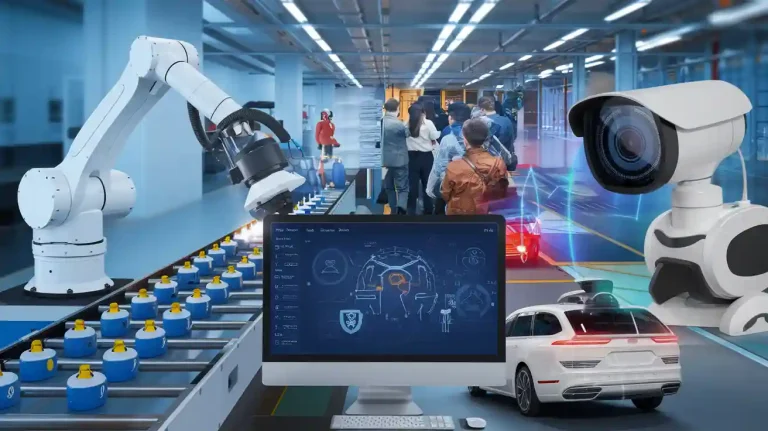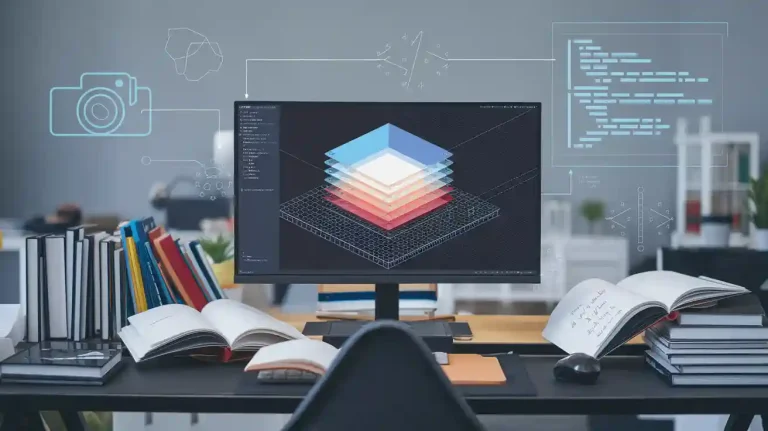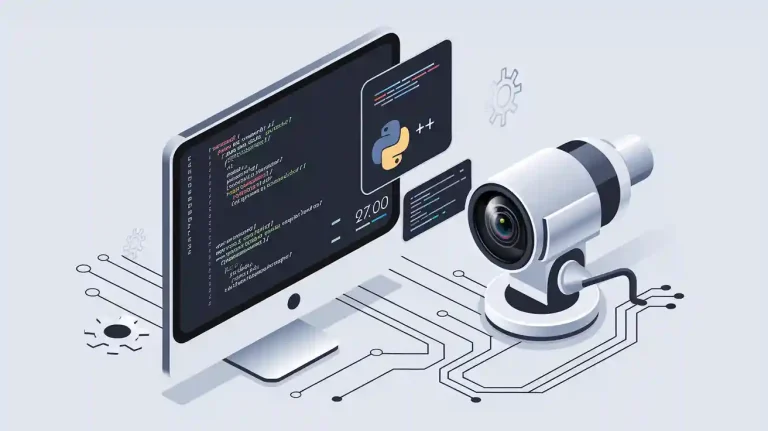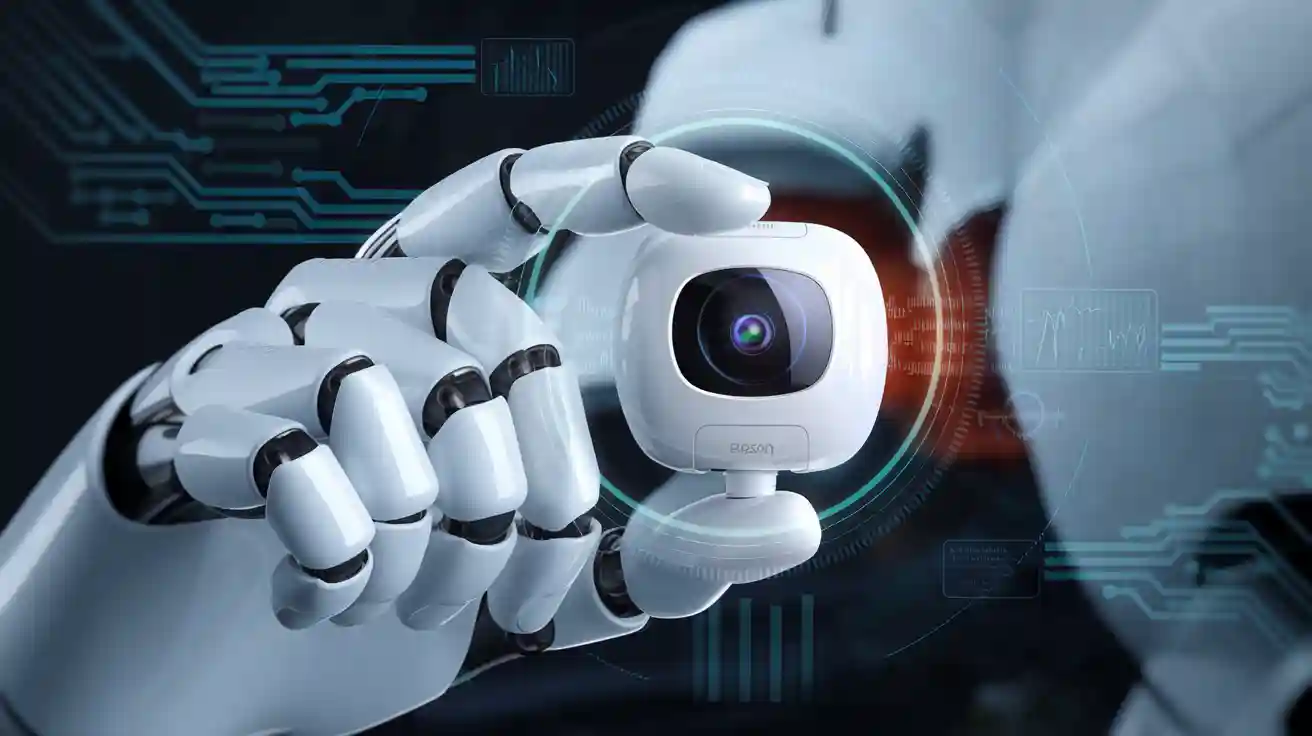
Vision sensors play a crucial role in machine vision by enabling precise and reliable automated inspection on production lines. They simplify integration with existing systems and support Industry 4.0 initiatives.
- Manufacturers use vision sensors to reduce waste, increase productivity, and detect subtle defects that human inspectors might miss.
- Machine vision powered by vision sensors allows automated, consistent, and high-speed quality control, improving throughput and reducing labor costs.
- Vision Sensors machine vision system enhances operational efficiency and provides valuable data for process optimization.
Key Takeaways
- Vision sensors act as the eyes of machines, capturing and analyzing images to detect defects and ensure quality quickly and accurately.
- These sensors combine camera, lighting, lens, and processing in one compact unit, making installation easy and reducing the need for extra hardware.
- Vision sensors excel at simple, repetitive tasks like presence detection, sorting, and barcode reading, helping factories save time and cut costs.
- Compared to full machine vision systems, vision sensors are more affordable, easier to use, and require less training, making them ideal for small to medium businesses.
- Using vision sensors improves product quality, boosts productivity, and provides real-time data that supports better process control and automation.
Vision Sensors in Machine Vision
What Are Vision Sensors?
Vision sensors serve as the eyes of a machine vision system. They use an image sensor, such as CCD or CMOS, to capture digital images of objects on a production line. These sensors combine a camera, lighting, lens, and controller in a single, compact unit. This all-in-one design allows easy installation in tight spaces and quick integration into existing machine vision systems. Vision sensors machine vision system setups often include built-in LED lighting and flexible mounting options, making them suitable for many industrial environments.
Vision sensors stand out because they do not need separate hardware for processing or illumination. Their modular bodies allow users to change lenses or filters for different visual inspection tasks. Many models feature intuitive software, so even users without technical backgrounds can set up inspections quickly. The integration of AI and edge processing enables real-time analysis and decision-making without external computers.
A table below shows common types of image sensors used in vision systems:
| Sensor Type | Key Features | Typical Use Cases |
|---|---|---|
| CCD/CMOS | High resolution, fast frame rates | Automated inspection, electronics |
| Line Scan | Scans one line at a time | Conveyor belt, print inspection |
| Area Scan | Captures full images | Defect inspection, quality assurance |
| 3D Scan | Captures depth and spatial data | Robotic guidance, advanced inspection |
Core Functions
Vision sensors machine vision system solutions perform several key functions that support industrial automation. Their main job is to capture images and process them to find features, measure parts, and check for errors. The functions performed by machine vision systems include:
- Capturing images of products using advanced image sensor technology.
- Processing images with tools like filtering, background suppression, and segmentation.
- Measuring object features such as area, length, and position.
- Performing pattern matching, edge detection, and color analysis.
- Outputting data or pass/fail results for automated sorting or rejection.
Vision sensors handle a wide range of tasks:
- Go/no-go inspections: They check if a product meets set standards and trigger actions if it does not.
- Defect inspection: They find surface flaws, missing parts, or incorrect assembly.
- Sorting: They identify and separate products based on color, shape, or size.
- Character recognition: They read printed codes or labels for tracking and verification.
- Presence/absence inspections: They confirm if all required parts are present.
Vision sensors machine vision system technology improves accuracy and speed in these tasks. The integration of AI and machine learning allows vision systems to adapt to new products and detect even small defects. These systems also reduce the need for manual checks, lowering costs and increasing throughput. The functions performed by machine vision systems now include advanced defect inspection, positioning, and quality control, making them essential for modern manufacturing.
Machine Vision System Components
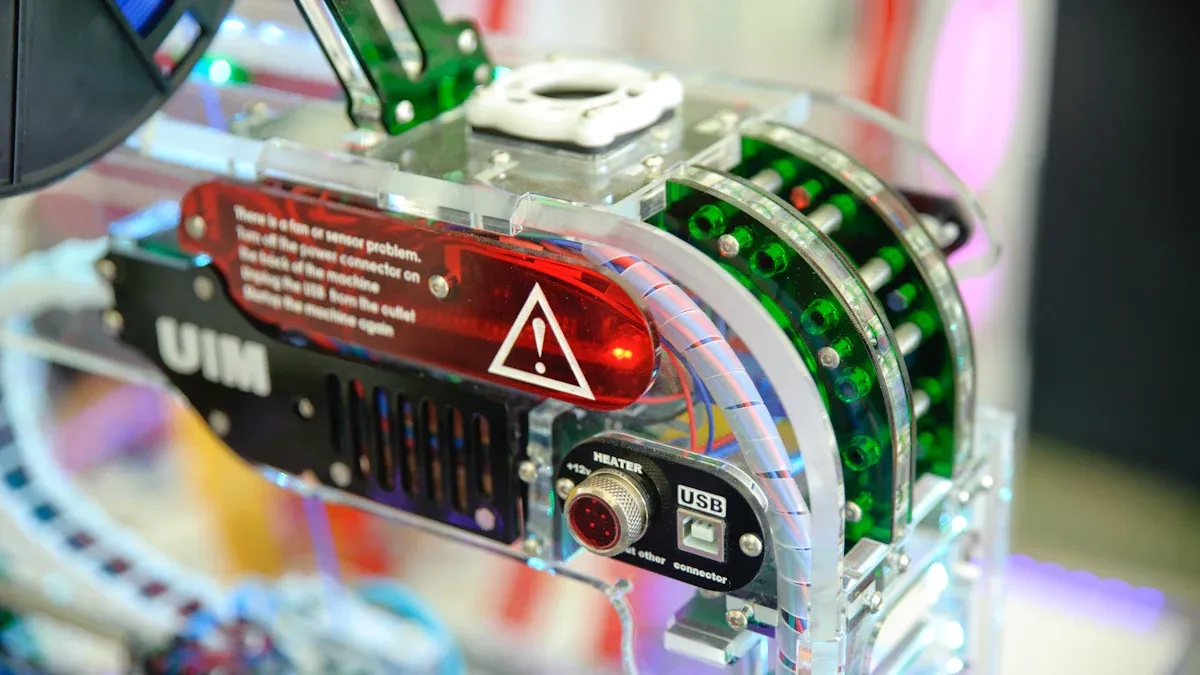
Key Elements
Machine vision systems rely on several important parts that work together to inspect and analyze products. Each part has a special job that helps the system see, process, and understand images.
- Lighting: Lighting makes objects visible and highlights features for clear image capture. Different lighting methods, such as LED, backlighting, and diffuse lighting, help improve image contrast and quality. Good lighting design often requires testing in real production settings.
- Camera Lenses: Lenses focus light onto the image sensor. They affect image quality, magnification, and coverage. The right lens ensures sharp images and accurate measurements. Rugged lenses work well in harsh environments.
- Image Sensors: The image sensor converts light into digital signals. CCD and CMOS sensors are common in machine vision systems. Sensor size, pixel size, and dynamic range all impact image quality and the ability to detect defects.
- Machine Vision Cameras: These cameras use area scan, line scan, or smart camera technology to capture images. They work with the image sensor to collect data for analysis.
- Processing Units: CPUs and GPUs handle image processing, segmentation, and measurement processing. They run algorithms for edge detection, background suppression, and segmentation processing.
- Image Processing Software: This software analyzes images, performs segmentation, and extracts information. It supports measurement using real color sensing and measurement using segmentation processing.
- Hardware Interfaces: These connect cameras, sensors, and computers, allowing communication between all components of machine vision systems.
- Calibration Tools: Calibration tools help ensure accurate measurements and reliable image capture.
Note: The components of machine vision systems must work together smoothly to achieve high accuracy and speed.
System Integration
Vision sensors machine vision system solutions combine several components into one compact device. These sensors often include a camera, lighting, lens, and controller. This design makes installation and setup easier. Vision sensors machine vision system devices can perform image processing, segmentation, and measurement processing inside the unit. They also support edge detection and background suppression without extra hardware.
A table below shows how vision sensors fit into the broader machine vision system:
| Component | Role in System |
|---|---|
| Lighting | Illuminates objects for clear image capture |
| Lens | Focuses light onto the image sensor |
| Image Sensor | Converts light into digital images |
| Vision Processing | Analyzes images for segmentation and measurement |
| Communications | Sends data to other devices for control or logging |
| Controller | Manages sensor operation and system integration |
Vision sensors reduce the need for multiple separate devices. They can inspect several points at once and detect features even if the target moves. This flexibility lowers hardware costs and makes machine vision systems easier to use. Segmentation processing, edge detection, and background suppression all happen inside the sensor, improving speed and reliability. These features help machine vision systems deliver accurate results in industrial automation.
Vision Sensors vs. Machine Vision Systems
Comparison
Vision sensors and machine vision systems both play important roles in industrial automation, but they differ in complexity, flexibility, and cost. Vision sensors focus on simple, specific tasks such as presence detection, alignment, and basic inspections. Machine vision systems handle more advanced jobs like assembly verification, optical character recognition, and 3D imaging.
The table below highlights the main differences:
| Aspect | Vision Sensors | Full Machine Vision Systems |
|---|---|---|
| Functionality | Perform simple, specific tasks like presence detection, alignment, and basic inspections | Handle complex tasks such as assembly verification, advanced inspections, OCR, and 3D imaging |
| Training Required | Minimal training; easy to install and operate | Require more training for setup, configuration, maintenance, and custom programming |
| Processing Power | Limited processing power; typically low resolution and single-camera setups | High processing power; often use multiple cameras and sensors with advanced hardware and software |
| Flexibility | Suited for single, well-defined tasks | Highly flexible and customizable for various automation processes |
| Cost | Lower initial and maintenance costs | Higher initial and ongoing costs due to complexity and advanced capabilities |
Vision sensors are designed for straightforward tasks and require little user expertise. They are simple and cost-effective. Machine vision systems use advanced hardware and software, multiple cameras, and powerful processors. These systems need more training and customization. They can perform complex inspections, guide robots, and process high-resolution images in real time.
Basic machine vision setups that use vision sensors are less expensive. Full machine vision systems, especially those with machine learning, require higher investments. These systems can cost between $60,000 and $100,000, depending on complexity and scalability. Vision sensors have become more affordable, so smaller manufacturers can use them and see a quick return on investment. Full machine vision systems remain more expensive, but they offer greater flexibility and long-term benefits.
Machine vision systems provide flexibility that vision sensors cannot match. They allow automated equipment to locate, identify, and analyze objects quickly and accurately. These systems can process multiple inspection tasks from a single image and adapt to changing production needs. Machine vision supports scalable deployment across different facilities and integrates with industrial automation systems. This adaptability makes them suitable for diverse environments.
Note: Vision sensors work best for simple, repetitive tasks. Machine vision systems excel in environments that require flexibility, scalability, and advanced image processing.
Advantages and Limits
Vision sensors offer several advantages in industrial settings:
- They are easy to install and operate.
- They require minimal training.
- They provide fast and reliable results for simple inspections.
- They help reduce production costs by automating basic quality checks.
- They are affordable, making them accessible for small and medium-sized businesses.
Vision sensors are ideal for tasks such as:
- Detecting the presence or absence of parts.
- Performing go/no-go inspections.
- Sorting products based on color or shape.
- Reading simple barcodes or labels.
These sensors fit well in factory automation and logistics, where ease of use and rapid deployment matter most. They require less technical knowledge and offer a cost-effective solution for straightforward inspections.
However, vision sensors have limits:
- They are sensitive to ambient light, which can affect image quality and cause detection errors.
- Hardware constraints, such as lens distortion and limited viewing angles, can reduce accuracy.
- Limited computing resources restrict their ability to run complex models or real-time processing.
- They struggle with diverse defect types and unknown defect mechanisms.
- High development costs for core components and software can increase overall expenses.
Vision sensors also face challenges in production environments. Lighting instability can make detection difficult. Multiple sensors may be needed for several inspection points. Cameras can have trouble isolating products in crowded spaces. Technical knowledge is sometimes required for setup and maintenance. There are trade-offs between performance, cost, and ease of integration.
Machine vision systems overcome many of these limits. They use modular hardware, such as smart cameras with interchangeable lenses and lighting. Advances in sensor technology make these systems compact and capable of high-speed, high-resolution imaging. Flexible software allows users to move vision programs across devices and scale up for more complex applications. User-friendly interfaces make machine vision accessible to a wider range of users.
Machine vision systems can handle complex inspections, edge detection, segmentation, and advanced image processing. They adapt to new products and changing production lines. These systems support deployment across multiple plants and protect user investments by allowing easy upgrades.
Applications of Vision Sensors
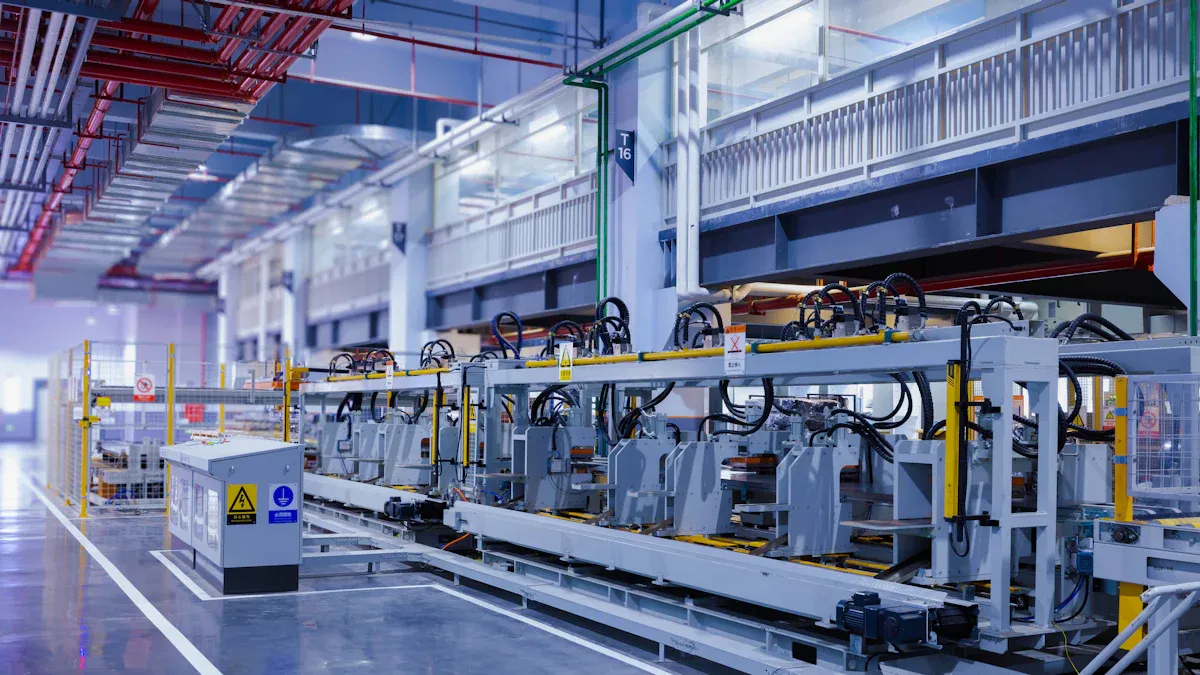
Industrial Automation
Vision sensors play a vital role in industrial automation. They help factories run smoothly by performing tasks that require speed and accuracy. Many companies use vision systems for presence or absence detection. These sensors check if a part is in the right place, giving a simple pass or fail result. Process monitoring uses vision sensors to make sure machines work correctly and bad parts do not move forward. Sortation is another common use. Vision sensors sort products based on color, shape, or size, making sorting faster and more reliable.
- Presence/absence detection
- Process monitoring
- Sortation
- Assembly verification
- Optical character recognition (OCR)
- Object counting
- Identification with barcode scanning
Factories also use vision sensors for barcode scanning and tracking. These sensors read 1D and 2D barcodes to manage inventory and verify product authenticity. High-speed sorting lines use modular vision tunnels and fixed-mount barcode readers to handle complex sorting and scanning tasks. Vision systems integrate with robots and PLCs, supporting accurate machine vision inspection and improving efficiency.
| Function Category | Specific Roles and Applications |
|---|---|
| Vision Sensor Setup | Vision setup, lens and light specification, software setup, integration with PLCs, robots, PCs |
| Vision Inspection & Measurement | Line tracking, error-proofing inspection, pass/fail inspection, color inspection, image logging |
| Barcode Scanning | 1D/2D barcode reading, barcode generation, programming, integration with automation devices |
| Sorting & Logistics | High-speed sorting, modular vision tunnels, fixed-mount barcode readers |
Vision sensors in industrial automation help companies reduce errors, speed up production, and lower costs.
Quality Control
Quality control depends on vision sensors for fast and reliable defect inspection. Automated inspection systems use high-resolution cameras to capture images of products as they move down the line. Software analyzes these images to find defects like cracks, misaligned labels, or missing parts. Vision systems can inspect hundreds or thousands of items per minute, far faster than human inspectors.
Vision sensors provide real-time data for process improvement. They help companies spot problems early, reducing waste and rework. Automated inspection removes subjectivity and ensures every product meets the same standard. AI-powered vision systems adapt to new types of defects and changing production needs, making them ideal for industries like automotive, electronics, and food production.
- Automated quality control systems combine sensors, AI, and machine vision for precise defect inspection.
- These systems detect defects invisible to the human eye.
- Vision sensors generate data that supports predictive maintenance and process improvement.
- They reduce labor costs and improve product quality by catching defects early.
Manufacturers report measurable improvements in efficiency and accuracy. AI-driven vision systems achieve defect detection rates over 99.5% and reduce inspection cycle times by 40%. Labor costs drop by about 50%, and energy use falls by more than 38%. The chart below shows how vision sensors improve quality control:

Applications of machine vision systems in quality control ensure consistent results and help companies maintain high standards. Vision sensors make defect inspection faster, more accurate, and less expensive, supporting better product quality and higher customer satisfaction.
Vision sensors stand as a key part of machine vision systems. They offer several benefits:
- Fast and accurate inspections boost productivity and quality.
- Simple setup and operation reduce training needs and errors.
- Cost-effective solutions make automation possible for many industries.
- Real-time data collection supports process improvement and traceability.
Vision sensors help robots see and adapt, making modern automation smarter and more reliable. Companies that use vision sensors in machine vision systems gain a strong edge in quality control and efficiency.
FAQ
What is the main purpose of a vision sensor?
A vision sensor checks products for defects or missing parts. It captures images and analyzes them to make sure each item meets quality standards. Many factories use vision sensors to improve accuracy and speed.
How do vision sensors differ from regular cameras?
Vision sensors have built-in processing. They can analyze images and make decisions without extra equipment. Regular cameras only capture images. Vision sensors work faster and need less setup.
Can vision sensors work in low-light environments?
Many vision sensors include built-in LED lighting. This feature helps them capture clear images even in dim areas. Some models also adjust brightness automatically for better results.
What industries use vision sensors the most?
Factories that make cars, electronics, food, and packaging use vision sensors often. These sensors help with sorting, inspection, and barcode reading. Many industries rely on them for quality control.
Do vision sensors need special training to operate?
Most vision sensors use simple software. Operators can set up inspections with easy steps. Many workers learn to use them quickly, even without technical backgrounds.
See Also
Why Triggering Plays A Critical Role In Machine Vision
Understanding The Function Of Cameras In Vision Systems
A Comprehensive Guide To Electronics In Vision Systems







